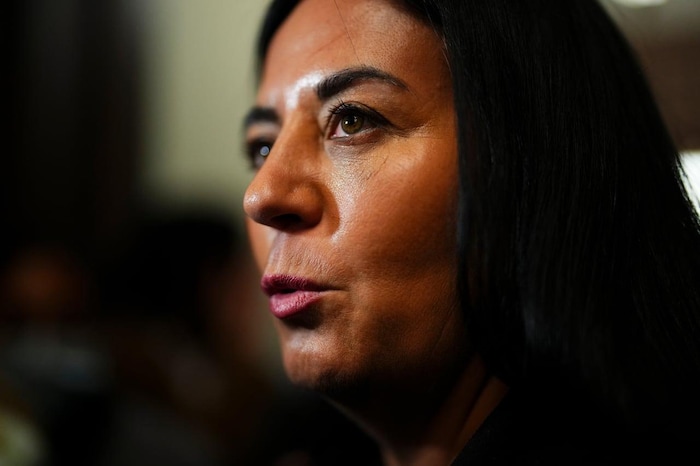World
Canada wants to be in the top 10 global tourism destinations — but it’s struggling to get there

Fin du widget Widget. Retourner au début du widget ?
Canada has set ambitious post-pandemic tourism targets and has a new strategy to meet them, but experts say geopolitical challenges, cost of travel in the country and climate change will make those goals difficult to achieve.
Canada’s goal is to get back into the top 10 tourist destinations in the world, after falling to 13th in 2021 on the World Economic Forum’s Travel and Tourism Development Index. Canada was 11th on the 2024 index, but the federal government has set a goal of seventh by 2030.
It also wants to increase annual tourism revenues from $140 billion to $160 billion and to boost the sector’s contribution to Canada’s GDP by 40 per cent.
But experts say it won’t be easy.
The index is not about measuring the number of visitors coming to the country,
said Frederic Dimanche, the director of the Ted Rogers School of Hospitality and Tourism Management at Toronto Metropolitan University.
“Some of the criteria being used are about safety, security, the quality of air transport, railroad and other travel infrastructure. It’s also about the attractions, the natural resources and cultural resources in the country.
Canada has to improve on its own, but also it depends on how well the other countries are doing,
Dimanche added.
Tourists take selfies and photograph Percé Rock in Percé, Que., during a boat tour.
Photo: Associated Press / Carolyn Kaster
Destination Canada, the Crown corporation tasked with reaching Canada’s tourism goals, released a new strategy in June on what needs to be done to get there.
That strategy includes identifying the top target audiences, how to brand Canada, how to attract more business events and conventions, how to increase labour supply and how to do it all with environmental sustainability in mind.
One of those target markets is East Asia, including China.
Canada-China tensions weigh on tourism
The Canada-China relationship is still fraught. China has not put Canada back on its list of approved tours.
We know that we’ve lost a lot of business from China,
said Dimanche. Some operators have been badly affected by this. So if we can change that, it would be for the better, but it’s not really something that we can control.
Tourists visit the lighthouse in Peggy’s Cove, N.S., on Canada Day in 2022. Canada is struggling to get back into the top 10 most-visited countries by tourists.
Photo: The Canadian Press / Darren Calabrese
Overseas wars and conflicts also affect commercial air routes to Canada, and their availability and price. So while numbers show domestic travel in Canada has fully rebounded after the pandemic, as has the number of Canadians going overseas, the number of foreigners travelling to Canada has not returned to pre-pandemic levels.
The rebound in demand among Canadian households to foreign destinations has not been reciprocated to the same extent by foreign visitors coming to Canada,
said RBC economist Claire Fan, who authored a recent report on the struggles the tourism sector in Canada is facing.
There’s still a 10 per cent gap and we found it’s mostly driven by visitors not coming from East Asia. That includes China, Japan and South Korea,
Fan said.
Tour operators say they’ve certainly seen evidence of that first hand.
We still haven’t seen the Asian market really fully come back to what it used to,
said Etienne Cameron, co-owner of Lady Dive Tours, a bus-turned boat amphibus
tour in Ottawa.
He says Canada not being on China’s approved list continues to be a major blow.
Golfers walk along a fairway towards the Banff Springs Hotel in Banff, Alta.
Photo: The Canadian Press / Jeff McIntosh
We’ve noticed the impact. It’s been huge. Big groups aren’t in the city anymore.
Three quarters of Canada’s tourism sector is domestic demand, and Fan argues that’s what the government should focus on growing.
But the travel industry is considered an export sector because foreign travellers bring in new money. So foreigners continue to be a target market.
Tourism Minister Soraya Martinez Ferrada says tourism is a huge economic driver for Canada.
Photo: The Canadian Press / Sean Kilpatrick
It means you get more travellers, they spend more money, they stay longer and they come all year around,
said federal Minister of Tourism Soraya Martinez Ferrada.
1.9M Canadian jobs depend on tourism
According to government statistics, the tourism sector supported 1.9 million jobs across Canada, in every region of the country.
Tourism is an economic driver.… It’s actually more than the automotive sector, the agriculture sector, the fisheries sector,
said Martinez Ferrada.
Other obstacles include strained relations with India and recently reinstated Canadian visa requirements for visitors from Mexico.
But the cost of getting around a country as large as Canada is also a hard sell, especially when it does not have rapid rail to offer or airline competition to keep prices low — offerings that other much smaller countries have.
Martinez Ferrada said one part of the government’s tourism strategy is to invest further in transportation.
If you want to go from Montreal to Vancouver and it costs you as much as going to Paris, yeah maybe people would say ‘Maybe I’ll go to Paris.’ But if you go to Paris, then the costs of being in Paris is very high,
Martinez Ferrada said.
Etienne Cameron, co-owner of Lady Dive Tours, says Canada needs to ‘focus more on establishing relations with other countries.’
Photo: CBC / Karina Roman
The government is hoping that possible growth in tourism could come from more family and friend visits from overseas, based on Canada’s surging immigration.
There is also growing demand from foreigners for Indigenous-based tourism.
But another challenge is the escalating impact of climate change.
For example, wildfires (new window) threaten the country’s reputation when newspapers around the world say Canada is burning,
when it’s only a couple of regions in trouble as opposed to the whole country.
Climate change is a new conversation for us as a sector,
said Martinez Ferrada.
Not only addressing the threat of climate change, but are we also addressing, for instance, if we have to evacuate. How do we evacuate tourists from a region?
Although climate change and a river that stays unfrozen longer could also translate into an extended tourist season for the Lady Dive Amphibus in Ottawa.
I’m not necessarily worried that we’re not going to get back to where we were,
said Cameron. I just think we need to focus more on establishing relations with other countries, putting more money into tourism and really showcasing Canada and how great it is.
An ‘amphibus’ in Ottawa, run by Lady Dive Tours.
Photo: CBC / Karina Roman
ABOUT THE AUTHOR
Karina Roman (new window) · CBC News · Senior Reporter, Parliamentary Bureau
Karina Roman joined CBC’s parliamentary bureau in 2008. She can be reached on email karina.roman@cbc.ca or on Twitter @karinaroman1













